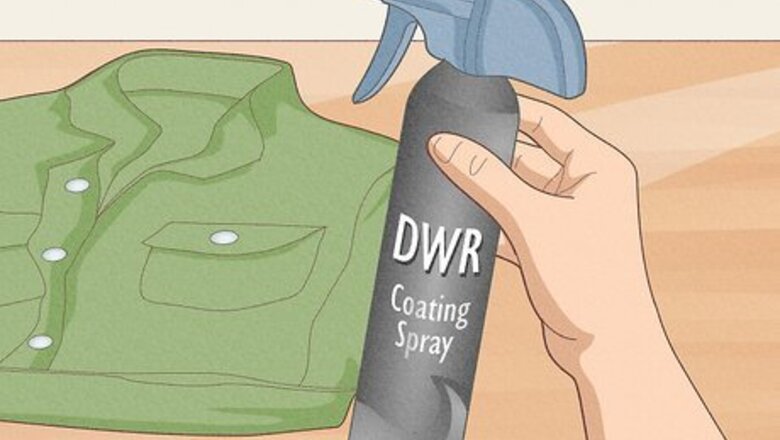
views
Spraying a Waterproof Coating
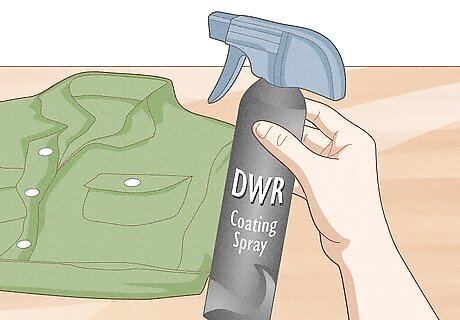
Choose a durable water-repellent spray to waterproof any type of fabric. Durable water-repellent coating, or DWR, is a liquid polymer that coats the fabric and makes it resistant to water. The spray works for any type of clothing material including canvas, cotton, and leather, and is a great choice if you’re looking for an easy application, or to re-coat a raincoat or waterproof clothing. Look for a DWR coating spray at your local outdoor supply shop or search online for it. Many raincoats and water-resistant clothing have been coated with a DWR spray, which can fade over time. You can easily re-coat your clothing to restore its water resistance.
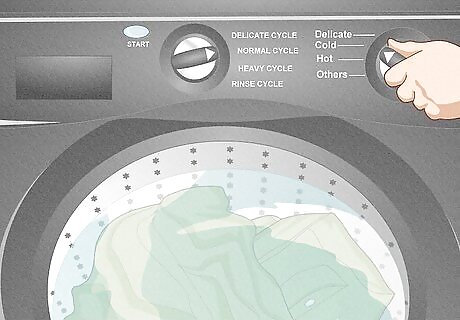
Wash the clothes with a technical fabric wash and let them dry. Dirt and residue on the surface of your clothes will affect the adhesion of your DWR spray, so run them through your washer and dryer before you apply it. Use a technical fabric wash, which is made of biodegradable soaps and won’t leave behind a residue that will affect the spray. Standard detergents can leave behind an oily residue that will actually attract water. Technical fabric washes are also gentler on the fabric and are more environmentally-friendly. You can find technical fabric washes at specialty clothing shops or by ordering it online. A few popular brands include NikWax Tech Wash and Dry Guy Fabric Tech Wash.
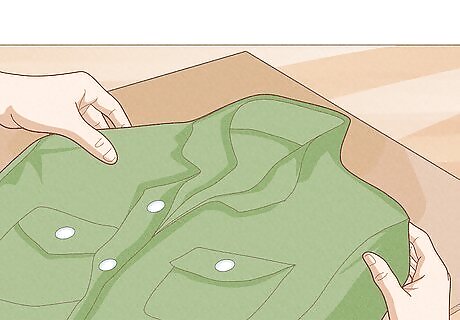
Place your clothing item on a piece of cardboard. Lie your clothing flat on the ground on top of a piece of clean cardboard so you don’t get any spray on the carpet or ground beneath it. Make sure the clothes don’t have any folds or creases in them so the spray goes on evenly. DWR spray can become slick if water gets on it, so don’t apply it over a concrete or tile floor without using cardboard to protect it.
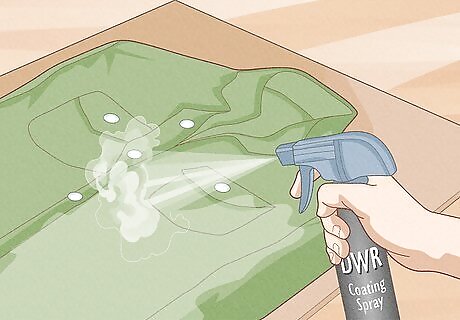
Apply an even coat of the DWR spray all over the fabric. Hold the spray bottle 6 inches (15 cm) from the fabric and move it back and forth as you apply the coating so it goes on evenly. Flip the clothing over and adjust it as needed so you’re able to apply the spray over all of the surface. A thin, even layer is the goal.

Wipe away the extra liquid with a clean cloth and let the clothes dry. Once you’re finished applying the DWR coating, take a clean cloth and use it gently wipe away an of the excess liquid so only a thin layer is infused into the fibers of the fabric. Hang the clothing on a clothesline or drying rack and wait until the material is fully dry before you wear it.
Waxing the Clothing
Choose wax to waterproof canvas and fabric with natural fibers. Wax is a natural and effective way to waterproof clothing such as jackets, hats, and even bags, but it’s most effective on natural materials like canvas and natural fibers such as cotton or hemp. Choose wax to waterproof your clothes if the fabric is made out of natural, non-synthetic fibers. Synthetic fibers may not absorb the wax as well and may not form a waterproof coating.
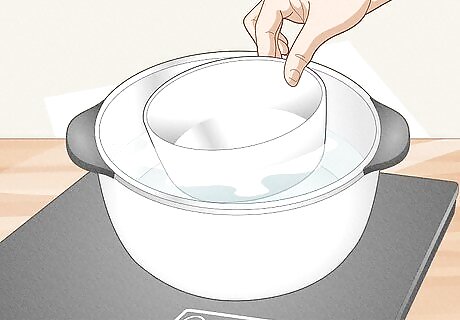
Boil water in a saucepan and place a metal bowl on top. Make a double boiler that will gently heat up the wax by taking a standard-sized saucepan and filling it about halfway with water. Bring the water to a bowl and then take a metal bowl and rest it on the pan so the bottom isn’t touching the water and space between the pan and bowl is able to trap the heat. If the bowl is actually in contact with the water then it will become too hot, so make sure you use a bowl large enough to cover the water without touching it.
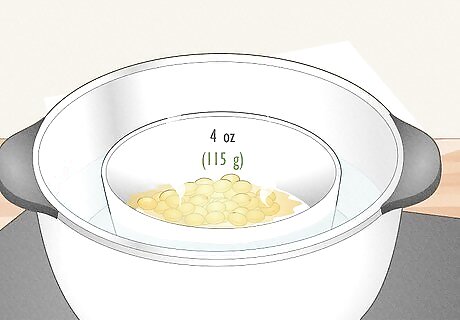
Melt 4 oz (115 g) of beeswax pellets and paraffin wax in the bowl. Beeswax pellets are small beads of solid wax. Place them in the metal bowl to gently melt them. Paraffin wax comes as a solid block, so cut off chunks of it and add 4 oz (115 g) into the bowl with the beeswax and stir them as they melt to combine them. You can find beeswax pellets and paraffin wax at your local department store, craft supply store, or by ordering them online. Combining both waxes creates an insoluble, waterproof mixture.
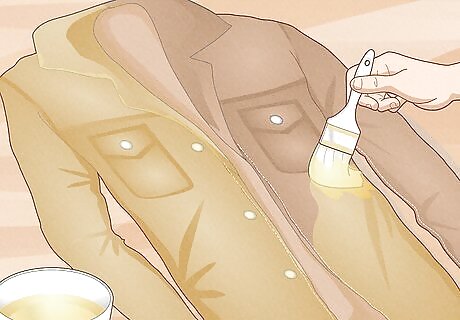
Brush a thick layer of the wax over the fabric with a paintbrush. Take a 1 in (2.5 cm) paintbrush and dip it into the wax mixture in the bowl. Start in 1 section of the clothing item and spread a thick layer of the wax. Work in sections to apply the wax in an even layer over the entire surface of the fabric. Make sure you don’t leave any gaps or exposed areas. Be sure to get crevices such as armpits and inner seams as well.Tip: Use a cheap paintbrush with stiff bristles, which will spread the viscous wax more effectively.
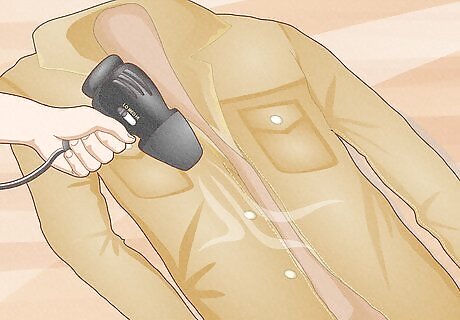
Hold a hairdryer over the wax until it melts it into the fabric. Once you’ve applied the wax mixture all over the jacket, use a hairdryer on a high-heat setting and keep it continuously moving over the surface of the clothing for about 5-10 minutes, or until the wax liquefies. Move the hairdryer all around the clothing to heat and infuse the wax with the fibers of the clothing. Don’t hold the hairdryer over 1 spot for too long or the wax can liquefy and run off.
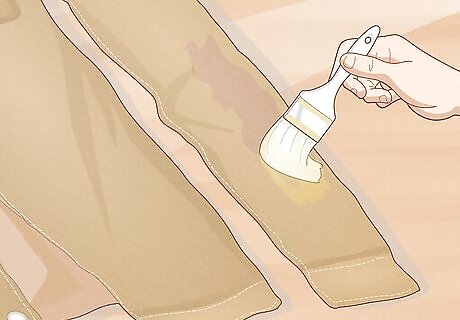
Let the wax cool and apply more to any uneven spots. The wax mixture will start to harden within a few minutes, so wait for it to dry and inspect the clothing. Look for any patches that are missing the wax as well as sections with uneven layers. Add more wax to fill in or even out any areas, if necessary. If the wax in the bowl has started to harden, warm the saucepan up on the stuff to re-melt it.
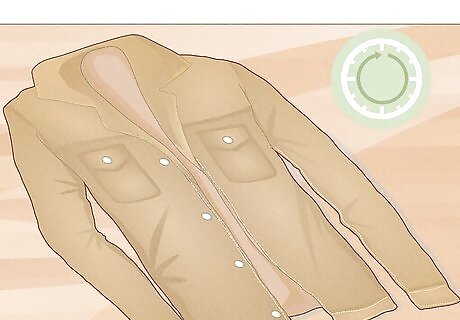
Allow the clothing to cure for 24 hours. Hang the clothing or place it on a clean surface in a well-ventilated area to help the wax harden and cure evenly. Wait a full day before you wear the clothing to allow the wax to fully fuse with the fibers. If the wax is still really damp and sticky after 24 hours, wait another 12 hours to let it cure.
Soaking in a Waterproofing Solution
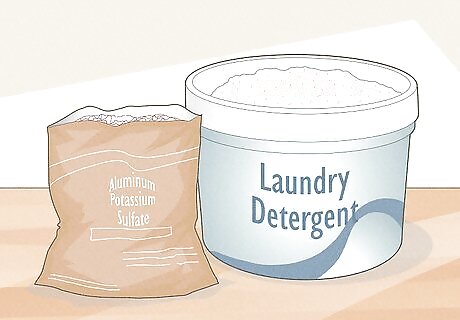
Use powder laundry detergent and alum to waterproof any fabric. Soaking clothes in a water-soluble soap and a salt such as aluminum potassium sulfate, or alum, causes a reaction that forms a waterproof layer over the surface of the clothes. Use a standard powdered laundry detergent that doesn’t have any extra scents or chemicals and powdered alum to create your solution. Waterproofing with alum and detergent takes more time than applying a DWR coating but is just as effective. Liquid detergent has other chemicals added to it to keep it in its liquid form that can leave an oily residue on the clothing, so go with unscented powdered detergent. Look for powdered alum at your local home improvement store, department store, or by ordering it online.

Wash and dry the fabric you want to waterproof. Run your clothing through a wash and dry cycle to remove any oil residue and dirt from the surface. It’s important that the fibers are clean so they’re better able to absorb the waterproofing solution.
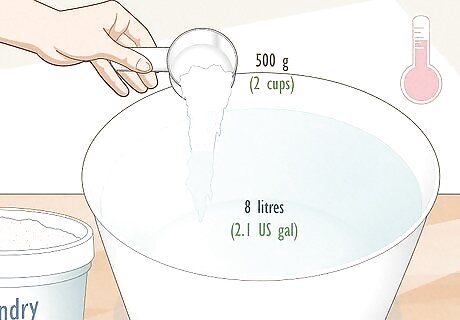
Combine 8 litres (2.1 US gal) of hot water and 500 g (2 cups) of detergent. Heat a pot of water on the stove until it boils and then remove it from heat so it stops bubbling. Carefully pour it into a large bucket and add your detergent into the water. Use a wooden spoon or another utensil to stir the water and combine it with the soap. Be careful not to burn yourself with the hot water. Hot water helps the soap combine and loosens the fibers of the clothing, making them absorb the detergent more effectively.
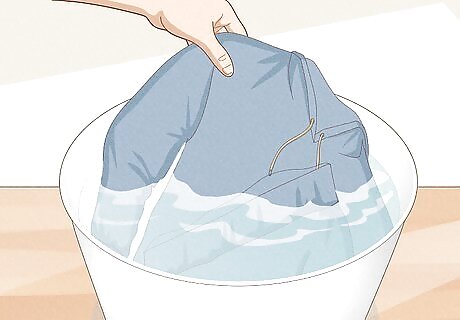
Submerge the fabric in the liquid so it’s saturated. Add the clothing into the bucket and use your wooden spoon to push it down into the water. Make sure all of the clothing is fully saturated in the solution to infuse the detergent with the fibers. Infusing the material with the detergent creates a foundation for the alum to react and form a waterproof layer. Push down any parts of the clothing that float to the top of the water. If the clothing keeps floating to the top, place a glass in the bucket to hold the material at the bottom.
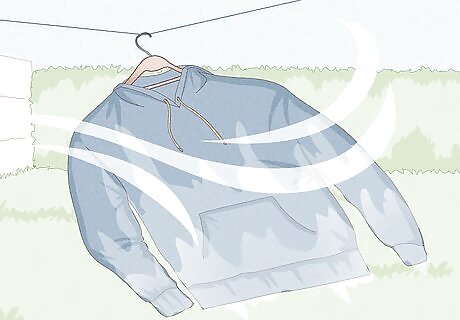
Hang the clothes to air dry. Carefully pull the clothing out of the bucket and wring it out gently so it’s not dripping too much. Pin the clothing to a clothesline in the sun and leave it to fully dry. Touch the material with your fingers to see if it’s fully dry before you take it down. As the clothing dries, the water-soluble soap infuses with the fabric, so it’s really important that it’s fully dry.

Mix 8 litres (2.1 US gal) of hot water and .25 kg (1 cup) of alum. Boil a pot of hot water and remove it from the heat so it stops bubbling before you carefully pour it into your bucket. Add your powdered alum into the water and stir it well to combine it.
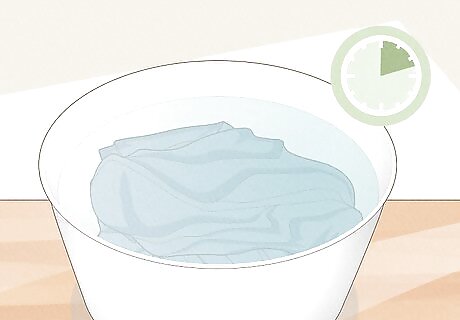
Soak the clothing in the solution for 2.5 hours. Submerge your clothing back in the bucket with the alum solution. Wait at least 2.5 hours to allow the alum to react with the water-soluble soap and form a waterproof coating. Make sure the clothing remains fully submerged the entire time. As the clothing soaks, the alum in the solution reacts with the chemicals in the detergent to form a waterproof layer over the fabric.
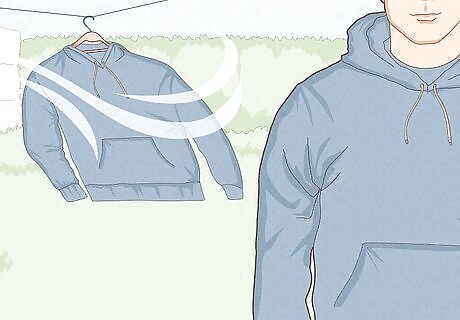
Allow the clothing to air dry completely before you wear it. Take the clothing out of the solution and hang up on a clothesline in the sun to dry it out and allow the coating to set into the fibers. Once the clothing is dry, you’re good to go! Remove it from the clothesline and wear it or store it until you’re ready to wear it.




















Comments
0 comment